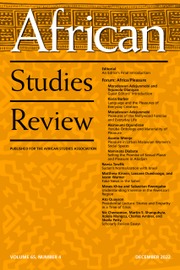There is, as Liz Carmichael points out, a dearth of literature on South Africa’s transition era. Save for some firsthand accounts, as well as Allister Sparks’s Tomorrow Is Another Country: The Inside Story of South Africa’s Road to Change (1994) and Patti Waldmeier’s Anatomy of a Miracle: The End of Apartheid and the Birth of the New South Africa (1997), few resources examine the transition itself. The two aforementioned works were published quite soon after the end of apartheid, and as Carmichael points out, they largely elide the National Peace Accord (NPA) as they march from apartheid to Mandela’s prison release to elections and the Truth and Reconciliation Commission (TRC). On those, scholars have spilled plenty of ink.
To that end, Peacemaking and Peacebuilding in South Africa presents a welcome addition to studies on the transition. It contextualizes South Africa’s peace process both within the nation’s own history as well as within global trends toward peacemaking and peacebuilding. With its publication coming nearly three decades after the end of apartheid, Carmichael’s work also speaks to the contemporary and lingering implications of the peace process. It includes discussions of major personalities but moves away from them enough to provide a glimpse into cross-sections of society that both affected and were affected by the transition. In short, it provides a comprehensive—but still accessible—scope that can serve as either introduction or deeper analysis of the country’s history, transition legacies, and contemporary issues.
Peacemaking and Peacebuilding in South Africa is laid out in three parts, with the book’s title providing a sufficient outline. Part One, “Peacemaking, Peacebuilding, and the South African Conflict,” outlines South African history prior to and during apartheid. It follows Carmichael’s Introduction, which outlines the semantics of both peacemaking and peacebuilding as conceptualized by the United Nations and international civil society in the 1990s. Part One zooms in to South Africa’s unique context, and the resulting history would be helpful to any reader with little background on the country. Part Two, “Peacemaking,” discusses the process of negotiating South Africa’s transition. It contains some of the more common narratives: of Mandela and De Klerk or Ramaphosa and Meyer. It discusses conversations about talks and summits. But it also moves beyond these to discuss churches, businesses, and members of civil society and grassroots outside of the major players. Finally, it includes several chapters that outline both the processes of negotiation and implementation of the NPA. Part Three, “Peacebuilding,” moves toward discussion of NPA implementation through elections, “making peace cool,” and grassroots canvassing across regions, and then finally to analysis of contemporary South Africa. As a conclusion, Carmichael thinks both about the nation at hand as well as about contemporary efforts at peacebuilding on a global scale.
Carmichael herself worked as a medical doctor in South Africa during apartheid and then for the Anglican Archdiocese of Johannesburg during the transition period. So one of the book’s great strengths comes as a repository for her many interviews and personal papers. Peacemaking and Peacebuilding contains a number of new conversations—particularly at the grassroots level—but it does not read as too much of an insider account. Importantly for students of southern Africa, Carmichael situates both peacemaking (defined by Boutros Boutros-Ghali on page 9 as trying to “bring hostile parties to agreement by peaceful means”) and peacebuilding (defined also by Boutros-Ghali as “the construction of a new environment”) within a southern African context. She argues that the first known UN use for peacebuilding referred to operations in Namibia in 1980 and cites Mark Manley in thinking of peacebuilding as a South Africa idea. Linguistically, she notes Manley’s discussion of kagiso as not just literally translating to peace, but containing the root of “to build,” meaning that peace is a process that must be built. I found this discussion quite compelling, because it centered the importance of South Africa’s democratic transition as a globally significant and successful event. At the same time, it moved far beyond paradigms of “The Miracle” to showcase the breadth and depth of actors and hard work crucial to bring about change.
Overall Peacemaking and Peacebuilding in South Africa does an admirable job of grounding the transition and National Peace Accords within the country’s own history. But it also expands the discussion to encompass global dimensions of and implications for these. Its early chapters work particularly well as a primer on the Rainbow Nation’s history, but it could receive wide readership across communities interested generally in the triumphs and failures of peacebuilding on a global scale.


